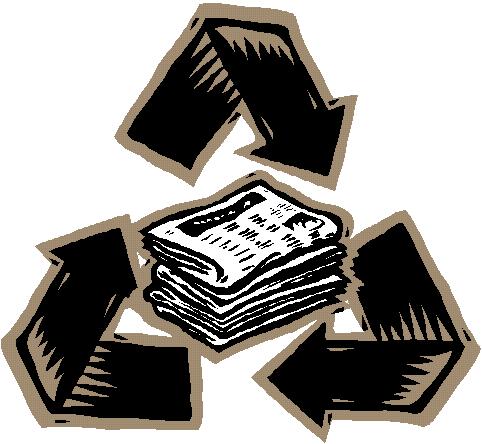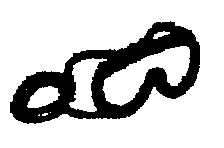MHS Chemistry
The Copper Cycle |
 |
In this experiment you will start with a piece of copper metal, dissolve it
in concentrated nitric acid, precipitate it as copper (II) hydroxide, dissolve
it in hydrochloric acid, and reduce everything back to copper metal. You
will observe the appearance of each reactant and product. Finally, you
will carefully calculate the percent of copper recovered, keeping in mind what
we have learned about significant digits.
(A possible variation is to start with an old penny, and determine the % mass
that is copper.)
WARNING: Concentrated nitric acid, concentrated hydrochloric
acid, and 6 M NaOH are all corrosive to flesh and can cause severe burns
or blindness. Follow all safety rules from your instructor! WEAR
GOGGLES AND APRONS!!!!















Before starting, make sure you have a copy of the Copper Cycle
Observations form. If you lose yours, click
here to print a new one.
Procedure - First Day
- Get a piece of copper from your teacher and record its mass to the nearest
milligram. Aim for about 0.5 grams, but record the exact mass.
- Place the copper into a clean 250 mL beaker and bring it to the fume hood.
Carefully add about 5 mL of concentrated nitric acid. Leave it in the
fume hood until the brown gas (dinitrogen tetroxide, N2O4)
has dissipated and all the copper has dissolved.
Cu(s) + NO3(aq)- + H(aq)+
® Cu(aq)2+ +
N2O4(g) + H2O(l)
then N2O4(g)
® 2NO2(g)
- When the copper has dissolved add distilled water, while stirring with
a glass rod, until the beaker is about half full. CAREFULLY bring the
beaker (with the stirring rod in it) back to your lab bench.
- While stirring gently and slowly - over ten seconds or so - add about 25
mL of 6 M NaOH. You should get a sludgy precipitate of copper
(II) hydroxide.
Cu(aq)2+ + 2OH(aq)-®
Cu(OH)2(s)
- With steady stirring, heat the beaker until the suspension begins
to boil. BE CAREFUL - keep stirring and heat gently! You should
get a dense black copper (II) oxide. Allow it to cool with the stirring
rod across the top of the beaker - not in it. Allow it to settle for
at least 10 minutes.
Cu(OH)2(s)® CuO(s)
+ H2O(g)
- While it is cooling, heat about 200 mL of distilled water in another beaker.
- Decant the solution with the copper (II) oxide and replace the liquid you
pour off with hot water. Stir and then allow it to settle again.
When the black copper (II) oxide has settled, decant and rinse a few more
times. Finally, add water until the beaker is about half full.
(If you are running out of time, decant the water from your settled precipitate,
cover your beaker, and start here next time.)
- Add about 10 mL of concentrated hydrochloric acid (HCl) and stir gently
until all the copper (II) oxide has dissolved.
CuO(aq) + 2H(aq)+®
Cu(aq)2+ + H2O(l)
Procedure - Second Day
- Add one or two small squares of aluminum foil (or a zinc strip) to the
solution and stir. The aluminum (or zinc) will dissolve, black specks
will appear, and a gas will bubble away. Continue adding aluminum one
square at a time until the solutionís blue color cannot be seen.
3Cu(aq)2+ + 2Al(s)®
3Cu(s) + 2Al(aq)3+
OR Cu(aq)2+
+ Zn(s) ® Cu(s)
+ Zn(aq)2+
- Test for the presence of more copper (II) ions in the solution by putting
about half a dropper-full of the solution into a small test tube. Add
a drop or two of concentrated ammonia solution to the test tube. A deep
blue color means there are more copper (II) ions in the solution and you should
repeat step 9. If the color is not blue then go on to the next step.
- Mass a piece of filter paper. Set up a funnel with the filter paper
and carefully filter the suspension of copper metal. Rinse the beaker
with water several times to get all the copper. Also, rinse the filter
paper from the top down to wash away any impurities mixed in with the copper.
- Allow the filter paper to dry to a constant mass. Determine the mass
of copper recovered. Calculate the percentage of the original copper
recovered.
- Make sure everything is cleaned up.
- Briefly explain why your % recovered was not exactly 100%. Be specific.
Note
Your lab write up should be one sheet. Make sure the title section is on
the front, and that there is a clear and complete data section. Show all
calculations clearly as discussed in class, and make sure to include the analysis
section (step 14).
[Copper Cycle score sheet][Copper
Cycle analysis][MHS Chem page]


![]()
![]()
![]()
![]()
![]()
![]()
![]()
![]()
![]()
![]()
![]()
![]()
![]()
![]()
![]()